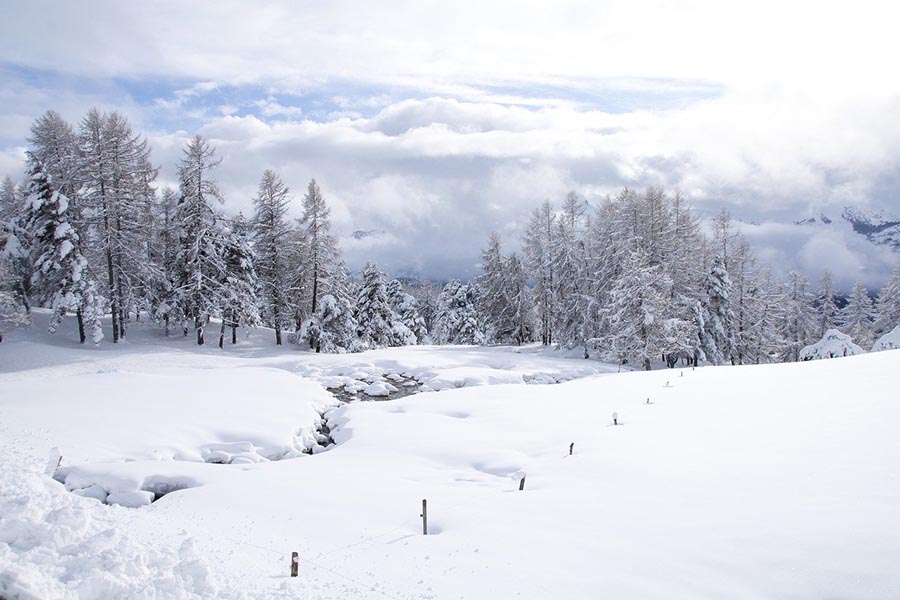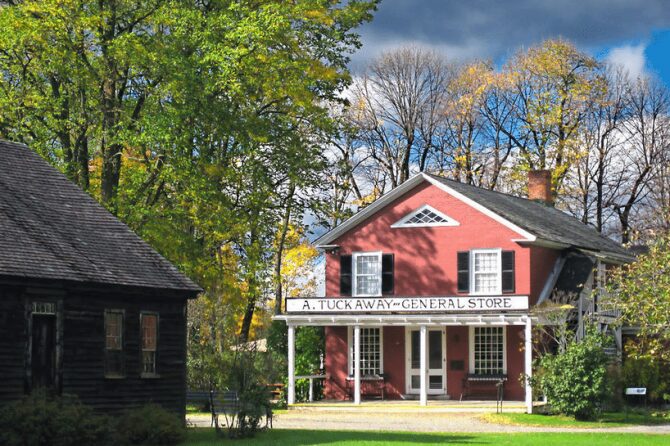Cryogenics in the snow covered hills of Vermont?
This unbelievable, yet creative tale, supposedly originated in the small town of Calais, Vermont
Vermonters are a frugal bunch and have been for many generations
In order to save energy during a long, cold Vermont winter, the truly ingenious old-time Vermont natives would find a way conserve food and heat by freezing their old folks, for the duration of winter, and thawing them out in the spring time!
Maybe Vermonters were onto something long before science fiction made suspended animation worth consideration. These days, there are cryogenic laboratories freeze drying the heads and bodies of those who can afford it, but unfortunately (or fortunately!) due to cell damage during freezing, they haven't figured out a way to bring frozen folks back to life. Perhaps the old timers in Vermont can give them a few tips!
Vermont’s Deep Frozen Folks
On December 21, 1887, the Montpelier Argus and Patriot published “A Strange Tale” on the front page, describing this unbelievable ritual. The reportedly true story recounts how a poor northern Vermont family developed the idea of putting their elderly and weakest members into cold storage until spring planting.
The following is from a story by Wesley S. Griswold, from Mischief in the Mountains, published by Vermont Life, 1970:
The Argus and Patriot listed the author as A.M., noting the events took place in a mountain town some 20 miles from Montpelier. A.M. He wrote that he excerpted the tale from his Uncle William’s diary.

January 7: I went on the mountain today, and witnessed what to me was a horrible sight. It seems that the dwellers there who are unable, either form age or other reasons, to contribute to the support of their families, are disposed of in the Winter months in a manner that will shock the one who reads this diary, unless that persons lives in that vicinity. I will describe what I saw. Six persons, four men and two women, one of the men a cripple about thirty-years-old, the other five past the age of usefulness, lay on the earthy floor of the cabin drugged into insensibility, while members of their families were gathered about them in apparent indifference. In a short time the unconscious bodies were inspected by several old people, who said, “They are ready.” They were then stripped of all their clothing, except a single garment. Then the bodies were carried outside, and laid on logs exposed to the bitter cold mountain air, the operation having been delayed several days for suitable weather.
It was night when the bodies were carried out, and the full moon occasionally obscured by flying clouds, shone on their upturned ghastly faces, and a horrible fascination kept me by the bodies as long as I could endure the severe cold. Soon the noses, ears and fingers began to turn white, then the limbs and face assumed a tallow look. I could stand the cold no longer, and went inside, where I found the friends in cheerful conversation.
In about an hour I went out and looked at the bodies; they were fast freezing……I could not shut out the sight of those freezing bodies outside, neither could I bear to be in darkness, but I piled on the wood in the cavernous fireplace, and seated on a shingle block, passed the dreary night, terror-stricken by the horrible sights I had witnessed.
January 8: ….”We shall want our men to plant our corn next spring,” said a youngish-looking woman, the wife of one of the frozen men, “and if you want to see them resuscitated you come here about the 10th of next May.”….
May 10:…The men commenced work at once, some shoveling away the snow and others tearing away the brush. Soon the box was visible. The cover was taken off, the layers of straw removed, and the foodies, frozen and apparently lifeless, lifted out and laid on the snow. Large troughs made of hemlock logs were placed near by, filled with tepid water, into which the bodies were separately placed, with the head slightly raised. Boiling water was then poured into the trough from kettles hung on poles near by, until the water in the trough was a hot as I could hold my hand in. Hemlock boughs had been put in the boiling water in such quantities that they had given the water the color of wine. After lying in this bath about an hour, color began to return to the bodies, when all hands began rubbing and chafing them. This continued about another hour, when a slight twitching of the muscles of ht face and limbs, followed by audible gasps, showed that life was not quenched, and that vitality was returning. Spirits were then given in small quantities, and allowed to trickle down their throats. Soon they could swallow, and more was given them, when their eyes opened, and they began to talk, and finally sat up in their bathtubs. They were then taken out and assisted to the house, where after a hearty dinner they seemed as well as ever, and in nowise injured, but rather refreshed, by their long sleep of four months.
Times change, and the old traditions have a way of fading out. These days, we Vermonters just buy an extra pair of woolen socks and throw an extra blanket or two on top of Grandpa.
The false story of Vermont families freezing their elderly relatives to save money circulated as rural legend for over 60 years before people revealed its origins as a hoax.

The Story Spreads as Bizarre Truth
- A Montpelier paper anonymously published the original 1,200-word story in 1887.
- The tale reported the drugging and freezing of infirm elderly family members in the winter.
- They claimed they stored the items outside and then revived them with herbal baths in spring.
- Story resurfaced in the 1930s and spread through articles and radio shows as “absolutely true”
The Hoax Origins Are Finally Uncovered
- In 1949, research traced the original tale to 1887 newspaper piece
- Author identified as Allen Morse, farmer and storyteller from Calais, VT
- Morse wrote a chilling tale as fiction and his daughter submitted to paper
- For decades no one realized it began as a made-up horror story
Key Takeaways
For over fifty years, the strange tale of freezing ill or aging Vermonters in winter to cut costs and thawing them in spring was commonly believed. However, researchers eventually discovered a Vermont farmer (with a highly creative mind) authored it as a fictional horror story in the 1880s, revealing how unchecked misinformation can gain widespread acceptance. The episode shows the importance of verifying sensational claims by tracing back to original sources before spreading further.
Impossible to freeze a person and bring them back to life?
No credible evidence supports the claim that anyone has ever been frozen and revived, in Vermont or elsewhere. The idea of freezing a human body in order to preserve it for future revival or medical treatment, a process known as cryonics, is highly speculative and controversial. While some proponents of cryonics claim that the technique has the potential to preserve the brain and other tissues to allow for future revival, there is no scientific basis for these claims and the process remains highly experimental.
No successful method currently exists for freezing and thawing a human body without causing significant tissue damage, and no scientific evidence suggests the possibility of ever successfully reviving a cryogenically frozen person.
So the next time you hear the word “popsicle” think about this tale and its ramifications.
Thank you for visiting Vermonter.com! Please subscribe to our email list for the latest articles!





